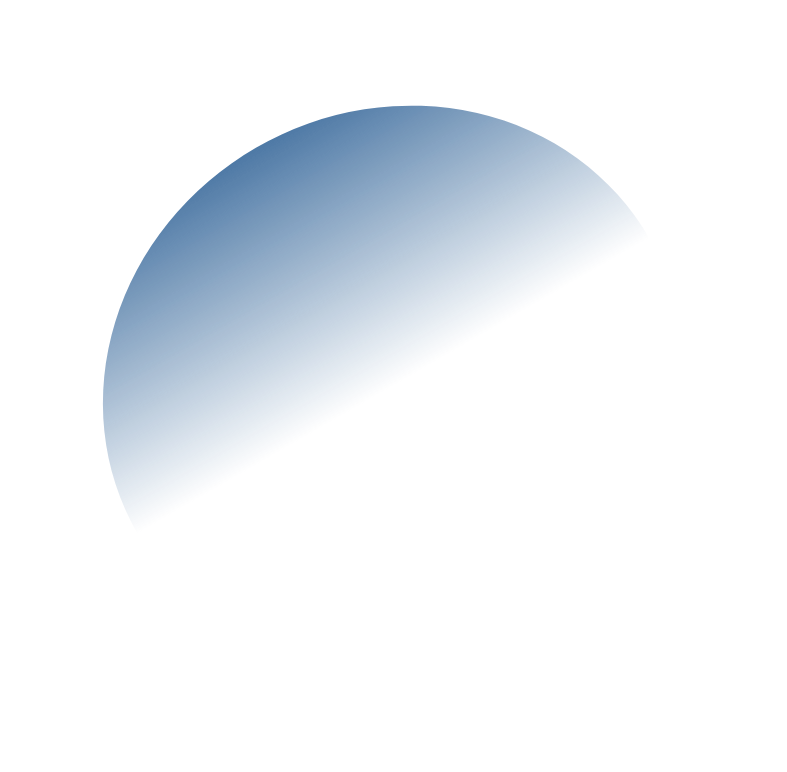Introduction
Purchasing a home is a significant financial decision and understanding the different types of mortgages available is crucial. In British Columbia, Canada, there are three primary categories of mortgages: insured mortgage, insurable mortgage, and uninsurable mortgage. Each category has distinct features, requirements, and implications for borrowers. In this comprehensive guide, we will explore the difference between insured mortgage, insurable mortgage, and uninsurable mortgages, providing you with the knowledge to make an informed decision.
Table of Contents
- What is a Mortgage?
- Insured Mortgage
- Insurable Mortgage
- Uninsurable Mortgage
- Key Differences Between Insured, Insurable, and Uninsurable Mortgages
- Eligibility Criteria for Insured, Insurable, and Uninsurable Mortgages
- Benefits of Insured Mortgages
- Drawbacks of Insured Mortgages
- Benefits of Insurable Mortgages
- Drawbacks of Insurable Mortgages
- Benefits of Uninsurable Mortgages
- Drawbacks of Uninsurable Mortgages
- Applying for an Insured Mortgage in British Columbia
- Applying for an Insurable Mortgage in British Columbia
- Applying for an Uninsurable Mortgage in British Columbia
- Frequently Asked Questions (FAQs)
- Conclusion
1. What is a Mortgage?
A mortgage is a loan that individuals obtain from a financial institution to finance the purchase of a property. The property itself serves as collateral for the loan, ensuring that the lender has a means of recovering their investment if the borrower defaults on the loan. Mortgages come in different types and categories, depending on various factors such as the down payment, credit history, and the property’s value.
2. Insured Mortgage
An insured mortgage is a type of mortgage that is backed by mortgage default insurance. This insurance protects the lender in case the borrower defaults on the loan. In Canada, mortgage default insurance is typically provided by the Canada Mortgage and Housing Corporation (CMHC) or other approved insurers. Insured mortgages are commonly required for borrowers who have a down payment of less than 20% of the property’s purchase price.
Insured mortgages are popular among first-time homebuyers or those with limited funds for a down payment. The insurance premium for an insured mortgage is typically added to the mortgage principal and paid off over the life of the loan. This type of mortgage provides lenders with an added layer of security, which allows them to offer more favourable terms and interest rates to borrowers.
3. Insurable Mortgage
An insurable mortgage is a mortgage that meets the underwriting criteria set by the mortgage insurer but is not required to be insured. Unlike insured mortgages, insurable mortgages are not mandatory for borrowers with a down payment of less than 20%. However, having an insurable mortgage can still offer benefits such as lower interest rates and more flexible repayment options.
The eligibility criteria for insurable mortgages may vary between different mortgage insurers. These criteria typically include factors such as the borrower’s creditworthiness, income stability, and the property’s value. While insurable mortgages do not carry the same level of insurance protection as insured mortgages, they still provide lenders with a certain level of confidence in the borrower’s ability to repay the loan.
4. Uninsurable Mortgage
An uninsurable mortgage is a type of mortgage that does not meet the eligibility criteria set by mortgage insurers and therefore cannot be insured. This category of mortgages is typically reserved for borrowers who have a higher level of risk associated with their loan application. Uninsurable mortgages are often required for properties with a higher value or for borrowers who do not meet the necessary income or credit requirements.
While uninsurable mortgages may have higher interest rates and stricter lending terms, they still provide an opportunity for borrowers to secure financing for their desired property. It’s important to note that even though these mortgages are not insured, borrowers are still required to make a down payment and meet the lender’s criteria.
5. Key Differences Between Insured, Insurable, and Uninsurable Mortgages
The key differences between insured, insurable, and uninsurable mortgages can be summarized as follows:
- Insurance Requirement: Insured mortgages require mandatory mortgage default insurance, while insurable mortgages may qualify for insurance but are not mandatory. Uninsurable mortgages do not meet the eligibility criteria for insurance.
- Down Payment: Insured mortgages are typically required for borrowers with a down payment of less than 20%. Insurable mortgages and uninsurable mortgages may have different down payment requirements based on the lender’s policies and the borrower’s qualifications.
- Interest Rates: Insured mortgages often come with lower interest rates due to the added security provided by the insurance. Insurable mortgages may also offer competitive interest rates, while uninsurable mortgages may have higher rates to compensate for the increased risk.
- Eligibility Criteria: Insured mortgages have specific eligibility criteria set by the mortgage insurer. Insurable mortgages have similar criteria but are not mandatory for insurance. Uninsurable mortgages have stricter eligibility criteria and may be required for higher-value properties or riskier borrowers.
6. Eligibility Criteria for Insured, Insurable, and Uninsurable Mortgages
The eligibility criteria for each type of mortgage may vary based on the lender’s policies and the requirements set by mortgage insurers. Here are some common factors that lenders consider when determining eligibility:
- Credit Score: Lenders assess the borrower’s credit history and credit score to evaluate their creditworthiness.
- Debt-to-Income Ratio: Lenders consider the borrower’s debt-to-income ratio to determine their ability to make mortgage payments.
- Income Stability: Lenders prefer borrowers with stable employment or a reliable source of income.
- Down Payment: The size of the down payment affects the mortgage category and may impact the interest rates offered.
- Property Value: The value and type of property being financed may influence the mortgage category and requirements.
It’s important to note that specific lenders and insurers may have additional criteria beyond these general factors.
7. Benefits of Insured Mortgages
- Lower Down Payment: Insured mortgages allow borrowers to purchase a property with a down payment as low as 5%.
- Favourable Interest Rates: Insured mortgages often come with lower interest rates, reducing the overall cost of borrowing.
- Easier Qualification: Insured mortgages have more flexible eligibility criteria, making it easier for borrowers to qualify.
- Longer Amortization Periods: Insured mortgages may offer longer repayment terms, resulting in lower monthly payments.
8. Drawbacks of Insured Mortgages
- Insurance Premium: Borrowers with insured mortgages are required to pay a mortgage insurance premium, increasing the overall loan amount.
- Limited Property Options: Insured mortgages have restrictions on the types of properties that can be financed.
- Qualification Requirements: While insured mortgages have more relaxed criteria, borrowers still need to meet specific requirements to be eligible.
9. Benefits of Insurable Mortgages
- Competitive Interest Rates: Insurable mortgages may offer competitive interest rates similar to insured mortgages.
- Flexibility: Borrowers with insurable mortgages have more flexibility in terms of property options and qualification criteria.
- Customized Solutions: Lenders offering insurable mortgages can tailor the loan structure to meet specific borrower needs.
10. Drawbacks of Insurable Mortgages
- Potential Higher Down Payment: Insurable mortgages may require a higher down payment compared to insured mortgages.
- Stricter Qualification Criteria: While less stringent than uninsurable mortgages, insurable mortgages still have certain qualification requirements.
- Additional Costs: Borrowers with insurable mortgages may have to pay for additional appraisal and underwriting fees.
11. Benefits of Uninsurable Mortgages
- High-Value Properties: Uninsurable mortgages provide financing options for properties with a higher value.
- Non-Traditional Borrowers: Uninsurable mortgages accommodate borrowers who may not meet the eligibility criteria for insured or insurable mortgages.
- Investment Properties: Uninsurable mortgages can be used to finance investment properties and secondary residences.
12. Drawbacks of Uninsurable Mortgages
- Higher Interest Rates: Uninsurable mortgages typically come with higher interest rates due to the increased risk involved.
- Stricter Qualification Requirements: Uninsurable mortgages have more stringent qualification criteria, making it challenging for some borrowers to qualify.
- Limited Lender Options: Not all lenders offer uninsurable mortgages, reducing the choices available to borrowers.
13. Applying for an Insured Mortgage in British Columbia
To apply for an insured mortgage in British Columbia, you will need to:
- Determine your eligibility by assessing your down payment, credit score, and debt-to-income ratio.
- Contact a mortgage broker or lender who can guide you through the process.
- Prepare the necessary documents, including proof of income, employment, and identification.
- Submit your mortgage application, along with the required documents.
- Await the lender’s decision and the approval of the mortgage default insurance.
14. Applying for an Insurable Mortgage in British Columbia
To apply for an insurable mortgage in British Columbia, follow these steps:
- Assess your eligibility based on factors such as credit score, income stability, and down payment.
- Research lenders who offer insurable mortgages and compare their terms and rates.
- Gather the required documentation, including proof of income, identification, and property details.
- Complete the mortgage application accurately and thoroughly.
- Submit the application along with the necessary documents to the lender.
- Await the lender’s decision and provide any additional information or documentation as requested.
15. Applying for an Uninsurable Mortgage in British Columbia
If you’re considering an uninsurable mortgage in British Columbia, the application process typically involves these steps:
- Review your financial situation to ensure you meet the stringent qualification criteria.
- Research lenders who offer uninsurable mortgages and compare their rates and terms.
- Prepare the required documentation, including proof of income, identification, and property details.
- Submit a comprehensive mortgage application, providing all necessary information.
- Be prepared to provide additional documentation or answer any queries from the lender during the underwriting process.
- Await the lender’s decision and, if approved, proceed with the mortgage closing process.
16. Frequently Asked Questions (FAQs)
Q: What is the minimum down payment required for an insured mortgage in British Columbia?
A: The minimum down payment for an insured mortgage in British Columbia is typically 5% of the property’s purchase price.
Q: Can I finance a secondary residence with an insurable mortgage?
A: Yes, insurable mortgages can be used to finance secondary residences, including vacation homes or rental properties.
Q: Are there any property restrictions for uninsurable mortgages?
A: Uninsurable mortgages may have restrictions on properties such as high-value homes, rural properties, or unique property types.
Q: What happens if I default on an insured mortgage?
A: If you default on an insured mortgage, the mortgage insurer will compensate the lender for their losses. However, you are still responsible for repaying the loan to the insurer.
Q: Can I switch from an insured mortgage to an insurable mortgage?
A: Yes, depending on your financial situation and eligibility, it may be possible to refinance an insured mortgage into an insurable mortgage.
Q: What is the maximum amortization period for an insured mortgage in British Columbia?
A: The maximum amortization period for an insured mortgage in British Columbia is generally 25 years (with some lenders allowing up to 30 years).
17. Conclusion
Understanding the difference between insured mortgage, insurable mortgage, and uninsurable mortgages is essential for prospective homebuyers in British Columbia, Canada. Each category has its own requirements, benefits, and limitations that can significantly impact the borrowing process. By familiarizing yourself with these distinctions, you can make informed decisions when choosing the most suitable mortgage for your needs. Whether you opt for an insured, insurable, or uninsurable mortgage, always consider your financial situation, future plans, and your credit score. Feel free to check out How to Improve Your Credit Score In Canada for some tips on how to improve your credit score.


